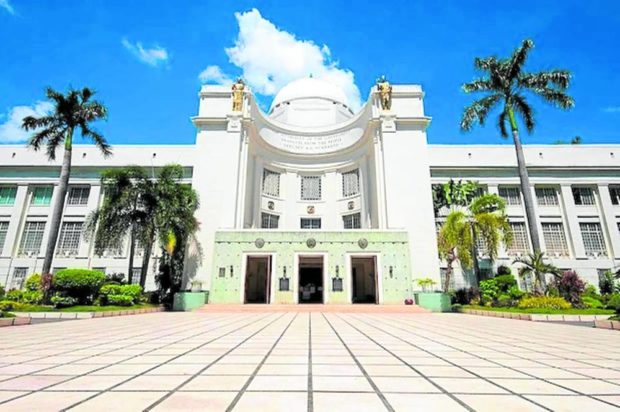SC overturns libel conviction of Cebu broadcaster
CEBU CITY — A Cebu broadcaster who was charged with libel by Cebu Gov. Gwendolyn Garcia almost 16 years ago recently secured a legal victory.
The Supreme Court (SC) has reversed and set aside the ruling of the lower courts that earlier found Leo Lastimosa guilty of maligning the governor.
In its 18-page decision promulgated on December 5, 2022 but was only uploaded on its website on April 3, the SC’s third division said the identity of Garcia was not established in the broadcaster’s column in The Freeman titled “Si Doling Kawatan” (Doling the thief).
In the column that was written in Cebuano, Lastimosa described Doling as a “fishmonger, thief, vindictive, ill-tempered, foul-mouthed and cruel.”
Garcia had told the court she felt she was the one alluded to in the column that came out on June 29, 2007.
Article continues after this advertisementBut the high court believed otherwise.
Article continues after this advertisement“The last element (of libel) – the element of identifiability of the victim – was, however, not established beyond reasonable doubt. The rule is that “[i]n order to maintain a libel suit, it is essential that the victim be identifiable although it is not necessary that he be named,” said Associate Justice Alfredo Benjamin Caguioa, the court’s division chairperson, who penned the ruling.
Associate Justices Henri Jean Paul Inting, Samuel Gaerlan, and Maria Filomena Singh concurred while Associate Justice Japar Dimaampao was on leave.
Lastimosa and Garcia have yet to issue statements regarding the ruling of the SC.
When she testified in court in 2012, Garcia said the accusations in Lastimosa’s column were meant to destroy her reputation.
She said she was extremely disturbed by what she called an attack on her and her family’s honor. Garcia said she had to reassure her children and their families that she never fed, clothed, and sheltered them using ill-gotten money.
Lastimosa, in his defense, said “Doling” was not the governor and that the fish vendor described in the column was an allegory he used in writing about an issue of public interest.
In 2013, Judge Rafael Yrastorza Sr. of the Regional Trial Court in Cebu City found Lastimosa guilty of libel. He was ordered to pay a fine of P6,000 and P2 million in damages.
The Court of Appeals (CA) affirmed Lastimosa’s conviction. It, however, modified the damages from P2 million to P500,000 as moral damages “not to enrich the complainant but instead to alleviate the moral suffering that resulted from the defendant’s culpable action.”
Lastimosa sought reconsideration of the CA decision but was denied in 2017, prompting the broadcaster to elevate the case to the SC.
In Dec. 2022, the high court found Lastimosa’s appeal “meritorious” and acquitted him of the libel case.
For an article to be libelous, the SC said the imputation must be defamatory, malicious, be given publicity, and the victim must be identifiable.
Caguioa said the imputation in the article “Si Doling Kawatan” is indeed defamatory, malicious, and was published.
However, he said the last element of libel, which is the identifiability of the victim, was not established beyond reasonable doubt.
“The rule is that in order to maintain a libel suit, it is essential that the victim be identifiable although it is not necessary that he/she be named,” Caguioa said.
The prosecution presented as its witnesses former Pinamungajan Mayor Glenn Baricuatro; and lawyer Pachico Seares, public and standards editor of SunStar Cebu.
Baricuatro said he was able to identify Doling as the governor.
But Caguioa said there is no question that Garcia was not explicitly referred to in the article “Si Doling Kawatan.”
“Thus, in convicting Lastimosa of the crime, the CA relied heavily on identification through description and by extrinsic evidence – through Baricuatro’ s testimony – to establish the link between ‘Doling’ and Garcia,” he said.
“It is thus the court’s considered view that Baricuatro’s testimony cannot be made the basis to conclude that a third person recognized Garcia to be the subject of the defamatory article. To reiterate, Baricuatro based his ‘belief’ merely on the auditory similarities between ‘Doling’ and ‘Gwendolyn,'” he added.
Caguioa said the similarities in how “Doling” and “Gwendolyn” sound when pronounced cannot, standing alone, be made the basis for establishing the link between the character “Doling” and Garcia.
On the other hand, Seares, who was a professor at the University of the Philippines – Cebu, was summoned by the lower court to testify regarding a journalism class informal survey on the identity of “Doling.”
After reading Lastimosa’s column, nine out of Seares’ 15 students identified the character “Doling” as Garcia.
The high court, however, said not one of the students was presented by the prosecution.
The SC also cited that the testimony of Seares was in fact detrimental to the prosecution’s case.
The students in the survey who believed that Doling was Garcia only said so because they heard some radio commentators saying that it was the governor. The other students did not hear and were not influenced by any radio commentator.
“Clear from the foregoing is the fact that none of the two witnesses who were meant to establish that third persons could recognize ‘Doling’ as Garcia was able to confirm beyond reasonable doubt that it indeed referred to her,” Caguioa said.
